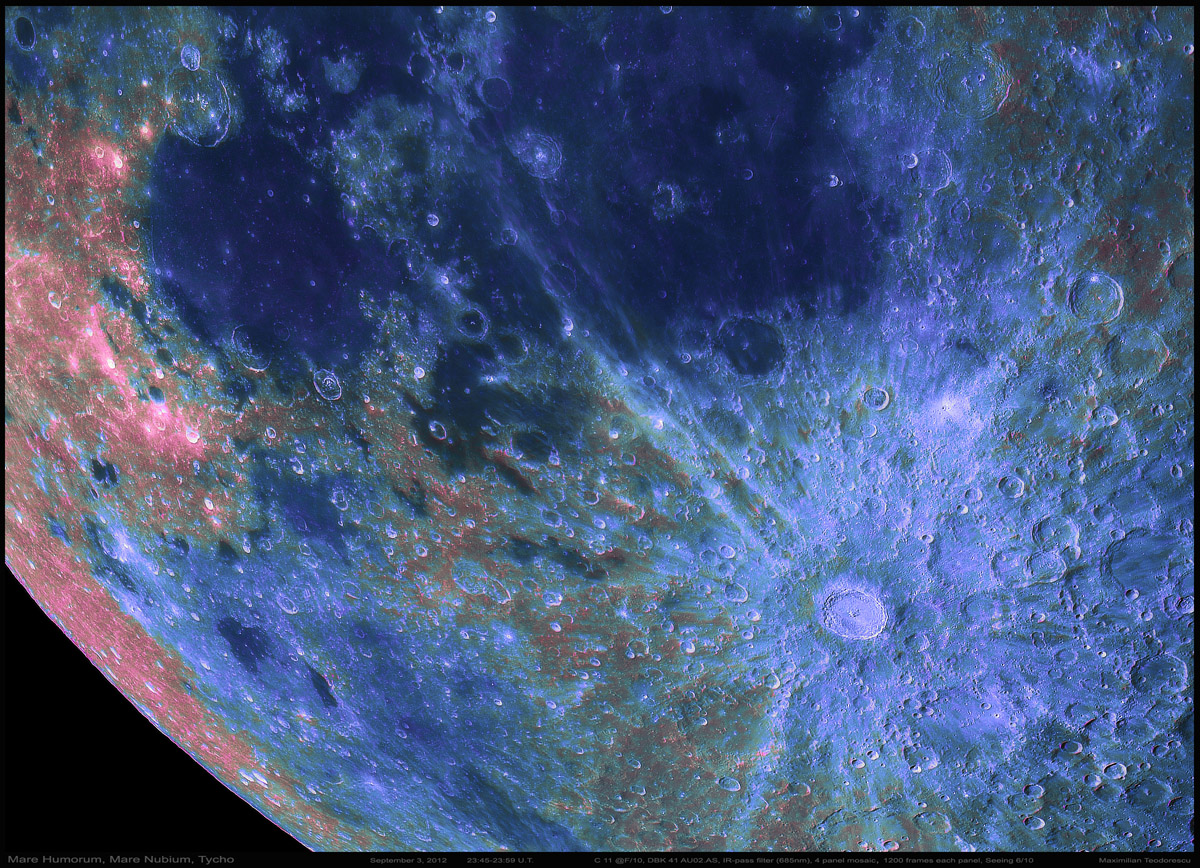September 16, 2012
Technicolor Moon

image by Maximilian Teodorescu, Dumitrana (Ilfov), Romania
I was talking to a friend yesterday, also an amateur astronomer and very good visual observer, who said to me "I'm not very interested in Moon images. It's a known world, nothing new on it...". Well, I suppose in part that he's right, nothing new besides some small impacts (seen rarely by amateurs and with no detectable craters left behind), but the thing with the Moon is actually the other way around... The Moon is like an history book: you look at the crater impacts, the formed vallis, rimae and volcanic domes and start to think in which order they formed, why and what was there before... It's the same thing like in this image I'm sending you. You know, or deduce, that Tycho must be one of the most recent impact here, then you look a little more and you see Gassendi and Vitello that are definitely older, and flooded my lava. And when you look at the lava plains of Mare Humorum you grasp the impacts of the past, the truly large ones, that shaped most of the near-side and made believe the first lunar observers that there is water on the Moon. Indeed, there are not great impacts occurring now on the Moon, like the recent Jupiter impact, but the Moon bares all of the scars from each of the impacts from the last billion years, so in some way it tells much more about the formation of our Solar System then any dynamic planet like the gas-giants, or even Mars, Venus and Earth... I still like to take images of the Moon and look occasionally through the eyepiece at this slice of Space History.
Maximilian Teodorescu
Technical Details
September 3, 2012; 23:45/23:59 U.T.
C 11 telescope working at F/10, DBK 41 AU02.AS camera with IR-pass filter (685nm), four image mosaic, each a 1200 frames, Seeing 6/10. The color data were extracted from IR data via Photoshop, then inverted and applied onto the greyscale version of the final image. Processing was done with Registax 6, AstraImage, Microsfot ICE and Photoshop CS2. The greyscale version, which has details such as Rimae Birt and also the crater that formed it, is here.
Related Links
Max's website
Yesterday's LPOD: Interplanetary Ballooning
Tomorrow's LPOD: Find the Big Crater
COMMENTS?
Register, Log in, and join in the comments.



